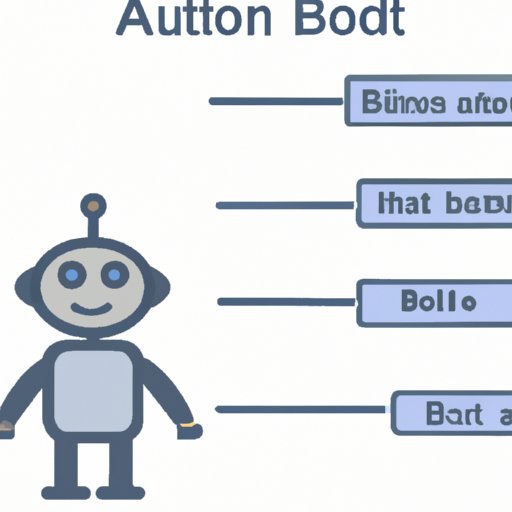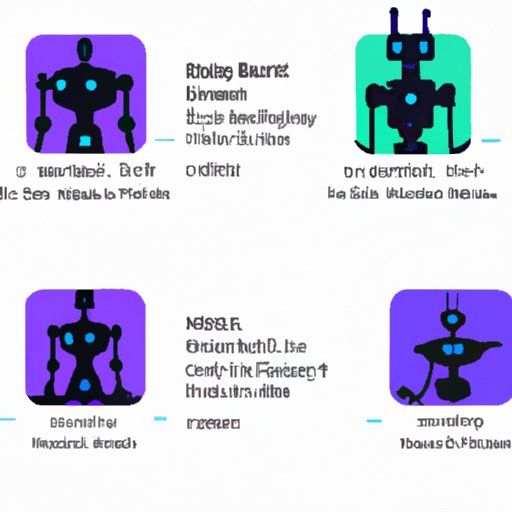Introduction
Artificial intelligence (AI) is rapidly changing the way businesses operate, with many companies turning to AI-powered solutions to improve their daily operations. One of the most popular applications of AI technology is the creation of AI bots. An AI bot is a computer program that is designed to simulate human conversations or interactions, allowing users to interact with it using natural language processing (NLP). AI bots can be used for a variety of purposes, from providing customer service to automating tasks.

Benefits of Creating an AI Bot
Creating an AI bot offers several benefits for businesses. AI bots are able to automate repetitive tasks, freeing up employees to focus on more important tasks. In addition, AI bots can provide customers with faster and more accurate responses to their questions or inquiries. This can help to improve customer satisfaction and loyalty, as customers are more likely to stay with a company that provides them with quick and efficient customer service. Finally, AI bots can help to reduce costs, as they can be used to automate processes such as sales and marketing.
Steps Involved in Building an AI Bot
Creating an AI bot involves several steps, including choosing the right platform, setting up your AI bot, training your AI bot, and testing and troubleshooting. Here are some tips to help you get started:
Choosing the Right Platform
The first step in creating an AI bot is to choose the right platform. There are several platforms available, such as Microsoft Azure, IBM Watson, Google Dialogflow, Amazon Lex, and others. Each platform has its own set of features and capabilities, so it’s important to research each one to find the best fit for your needs.
Setting Up Your AI Bot
Once you’ve chosen the right platform, the next step is to set up your AI bot. This involves creating the necessary accounts and configuring the settings for your bot. You will also need to create a “conversational flow” for your bot, which is a sequence of messages and instructions that your bot will use to respond to user queries.
Training Your AI Bot
After setting up your AI bot, the next step is to train it. Training your AI bot involves feeding it data, such as text, images, audio, and video, so that it can learn how to interact with users. This may involve using machine learning algorithms or natural language processing techniques.
Testing and Troubleshooting
Once your AI bot is trained, the next step is to test and troubleshoot it. This involves running tests to ensure that your bot is responding correctly to user queries and identifying any potential issues. If any issues are identified, they should be addressed before deploying your bot in production.

Different Types of AI Bots
There are several types of AI bots that can be created, each with its own unique capabilities. The most common types of AI bots include chatbots, voice assistants, image recognition bots, and natural language processing bots.
Chatbots
Chatbots are the most common type of AI bot. They are designed to simulate human conversations and allow users to interact with them using natural language processing. Chatbots can be used for a variety of purposes, such as customer service, sales, and product recommendations.
Voice Assistants
Voice assistants are AI bots that allow users to interact with them using voice commands. Popular examples of voice assistants include Amazon Alexa, Apple Siri, and Google Assistant. Voice assistants can be used for a variety of tasks, such as playing music, setting reminders, and providing information.
Image Recognition Bots
Image recognition bots are AI bots that are designed to recognize objects in photos or videos. These bots can be used for a variety of tasks, such as facial recognition, object detection, and image classification.
Natural Language Processing Bots
Natural language processing (NLP) bots are AI bots that are designed to understand natural language. These bots can be used to interpret and analyze text, allowing users to search for specific words or phrases in large bodies of text.

Examples of Successful AI Bots
There are several examples of successful AI bots, including Siri, Alexa, and Google Assistant. According to research conducted by PwC, “53% of consumers have used AI-driven services like [these] in the past year.”
Siri
Siri is an AI-powered virtual assistant developed by Apple. It allows users to interact with it using voice commands and can be used for a variety of tasks, such as playing music, setting reminders, and providing information. Siri is available on all Apple devices, including iPhones, iPads, Macs, and Apple Watches.
Alexa
Alexa is an AI-powered virtual assistant developed by Amazon. It allows users to interact with it using voice commands and can be used for a variety of tasks, such as playing music, setting reminders, and providing information. Alexa is available on a range of Amazon devices, including Echo speakers, Fire TV sticks, and Fire tablets.
Google Assistant
Google Assistant is an AI-powered virtual assistant developed by Google. It allows users to interact with it using voice commands and can be used for a variety of tasks, such as playing music, setting reminders, and providing information. Google Assistant is available on a range of Google devices, including Android phones, Google Home speakers, and Chromebooks.
Impact of AI Bots on Businesses and Industries
AI bots can have a significant impact on businesses and industries. AI bots can automate tasks, allowing businesses to reduce costs and increase efficiency. AI bots can also improve customer service, as they are able to provide customers with faster and more accurate responses to their questions or inquiries. Finally, AI bots can help businesses to gain insights into customer preferences and behaviors, allowing them to tailor their products and services to meet customer needs.
Conclusion
Creating an AI bot can offer numerous benefits for businesses, from automation of tasks to improved customer service. With the right platform and training, AI bots can be used for a variety of tasks, such as customer service, sales, and product recommendations. There are several successful examples of AI bots, including Siri, Alexa, and Google Assistant. AI bots can have a significant impact on businesses and industries, from automation of tasks to improved customer service and increased efficiency.
Summary of Benefits of Creating an AI Bot
Creating an AI bot offers several benefits, including automation of tasks, improved customer service, and increased efficiency. AI bots can be used for a variety of purposes, such as customer service, sales, and product recommendations.
Key Points to Consider When Creating an AI Bot
When creating an AI bot, it’s important to choose the right platform and set up your AI bot correctly. It’s also important to train your AI bot and test and troubleshoot it before deploying it in production. Finally, it’s important to consider the different types of AI bots, such as chatbots, voice assistants, image recognition bots, and natural language processing bots.
(Note: Is this article not meeting your expectations? Do you have knowledge or insights to share? Unlock new opportunities and expand your reach by joining our authors team. Click Registration to join us and share your expertise with our readers.)
